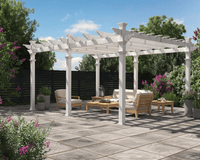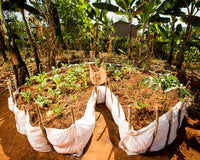6 Ways to Turn your Black Thumb Green
We’ve all wanted to grow something and have it flourish, only to find it has wilted and headed on for greener pastures, (ha) only for you to say, “I give up”. Some of us know those special few that can take an otherwise losing battle and revitalize and invigorate new life. Are you a black thumb? Has every plant, flower, garden you’ve ever had, come to an early demise? Let’s look at some of the easier things you can do to turn that black thumb, green. Mind you, it does take a level of commitment to keep something alive and healthy. So, let’s get our gardening gloves, a watering can and some good old fashioned elbow grease and start to grow something beautiful.
1. The basics are basic. What does a plant need to live…
Water - Like us, and all other life on this blue marble, we need liquid water to survive. It makes up most of a plants weight. 85% to 95%. Water is a solvent; thus, it serves as the bloodstream of the plant, delivering all the plants needed minerals. Not all plants need the same level of hydration. Research on the type of vegetation you are planting, and what water requirements should be considered. So, if you can raise a glass, you can tip a watering can.

Food – Plant nutrients are essential for its growth and health. These nutrients mostly come from the soil they are planted in. Selecting the correct soil for your plants can be a daunting task. While some bagged soils may be good for one plant, they may not be the best for another. Check with your local nursery to find out the best soil for what you would like to grow. You may have also heard this before, our March blog “Gardening, Composting and Tips and Tricks”, earthworms. Earthworms create nutrients from their excrement. Add these to your outdoor garden.

Light – While some of us seek the shade on those hot summer days, most plant life needs those hours spent in the sun. All plants require light for photosynthesis, the process within a plant that converts light, oxygen, and water into carbohydrates (energy). Plants require this energy in order to grow, bloom and produce seed.

2. Research Your Plant Zone. Your plants may be dying because they don't suit your climate...
You’ve been trying to grow that tropical oasis you once enjoyed on your southern island vacation. You live in Toronto. Two different climates. Unless you’re trying to grow in a greenhouse or indoors, where the climate can be controlled, this probably isn’t going to work for you. For outdoor gardens, researching what grows well in your area will prove beneficial. This way you get the satisfaction and enjoyment of growing a beautiful garden.

3. Try an Indoor Container Garden or potted plants...
Outdoor gardening not your speed or you have limited space? Live in an apartment or condominium? Perhaps indoor gardening is for you. The variety of indoor plants is vast. Some harder to maintain than others, some more unique than others. A few more more common, easy to care for house plants are Ferns, English Ivy and Pothos.

4. Don't Overwater...
Based on the above, indoor plant watering can be as little as once a week with the occasional misting of the leaves. Overwatering can lead to drowning your plant. While the roots of your plants take the water in to provide nutrients, they also need to breath. Oxygen from the air will not be absorbed. Signs of overwatering can be wilted or browning leaves, stunted growth and/or small blister that are brown or yellow.

5. Make Sure It Gets Appropriate Sunlight...
Direct, indirect bright, and indirect shaded. Depending on the plants you wish to grow, these conditions matter. Placing plants in windows on the south side of your home will guarantee direct sunlight for your plants that need this. For less direct but require it to be bright, placing away from any window, keeping the shades or drapery pulled back so light can flood the room. For indirect but not too bright. Simply pulling the curtains closer but not closed will do the trick. Now you may be thinking, “I want all these plants in the same area”, well, this is just a guideline. Even if a plant ideally needs direct sunlight, indirect bright will not kill those plants.

6. Inspect for Pests...
Aphids, Earwigs, Leaf Miners. Yuck. Leaf miners are any one of numerous species of insect in their larval stage, that eat the leaf tissue of plants. Moths, flies, and some beetles. How can we combat these pests? Aphids are almost invisible; Earwigs are a versatile survivor, and these Leaf Miners are quite sneaky as well. A simple solution of baking soda, dish soap, vegetable oil and water will help. Its not toxic to the insects or plants but will suffocate the insect larva. Especially for indoor plants, pesticides or insecticide are not recommended. Some can be harmful to you and any house pets you may have. Did you know that ladybugs can eat an average of 5000 aphids a year? Might not be so bad to have a few fly inside every now and then.
Not too difficult right? A little water, some sun and nutrient rich soil. Talk to them. They may not respond (if they do call the Inquirer) but, they do respond to vibrations. They make great listeners. Perhaps another blog on unorthodox methods to growing plants and flowers could be in the future. Nevertheless, I hope this blog was helpful. Look things up do some research, everyone deserves a chance to grow something they like.
See you soon,
Pete




